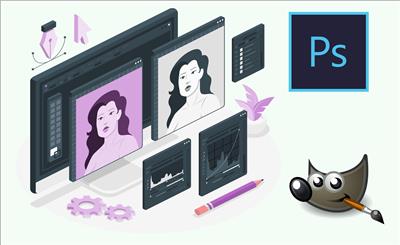
Best computer vision Courses
The journey of computer vision dates back to the 1960s when researchers began exploring ways to enable computers to interpret visual information. Over the years, significant milestones have been achieved, including the development of early image processing algorithms, pattern recognition techniques, and the emergence of artificial intelligence (AI) approaches.
Basics of Computer Vision
1. Image Acquisition
The process of computer vision starts with acquiring digital images or videos using cameras or sensors. These raw visual inputs serve as the foundation for subsequent analysis and processing.
2. Preprocessing
Before extracting meaningful information, raw images undergo preprocessing steps to enhance quality, remove noise, and standardize features. Common preprocessing techniques include filtering, noise reduction, and color normalization.
3. Feature Extraction
Feature extraction involves identifying relevant patterns or characteristics within the images. This step aims to highlight key elements that are crucial for subsequent tasks such as object detection, recognition, or classification.
4. Object Detection and Recognition
One of the primary objectives of computer vision is to detect and recognize objects within images or videos. This involves identifying specific entities, distinguishing between different classes, and accurately locating their positions.
Advanced Techniques in Computer Vision
1. Deep Learning and Neural Networks
Recent advancements in computer vision have been driven by deep learning techniques, particularly convolutional neural networks (CNNs). These deep-learning architectures excel in tasks such as image classification, object detection, and semantic segmentation.
2. Image Segmentation
Image segmentation divides an image into meaningful segments or regions based on shared characteristics. This technique is valuable for tasks like image understanding, scene analysis, and medical image processing.
Applications of Computer Vision
Computer vision finds applications across diverse industries, transforming various domains with its capabilities.
1. Healthcare
In healthcare, computer vision facilitates medical imaging analysis, disease diagnosis, and treatment planning. It enables automatic interpretation of medical images, assisting clinicians in identifying abnormalities or anomalies.
2. Automotive Industry
In the automotive sector, computer vision powers advanced driver-assistance systems (ADAS) and autonomous vehicles. It enables vehicles to perceive their surroundings, detect obstacles, and make real-time driving decisions.
3. Retail and E-commerce
Computer vision enhances the retail experience by enabling visual search, product recognition, and inventory management. It enables personalized recommendations, virtual try-on solutions, and cashier-less checkout experiences.
4. Surveillance and Security
In surveillance and security applications, computer vision enhances monitoring and threat detection capabilities. It enables intelligent video analytics, facial recognition, and behavior analysis for identifying suspicious activities.
Challenges and Limitations
Despite its significant advancements, computer vision still faces several challenges and limitations.
1. Accuracy and Reliability
Achieving high accuracy and reliability in real-world scenarios remains a challenge, especially in complex environments with varying conditions and lighting.
2. Computational Resources
Many computer vision tasks require substantial computational resources, limiting their scalability and deployment in resource-constrained environments.
3. Ethical and Privacy Concerns
The widespread adoption of computer vision raises ethical and privacy concerns related to surveillance, data privacy, and potential biases in algorithms.
Future Trends in Computer Vision
The future of computer vision holds promising opportunities for innovation and advancement.
1. Integration with Augmented Reality (AR) and Virtual Reality (VR)
Computer vision technology is increasingly integrated with AR and VR applications, enabling immersive experiences and interactive environments.
2. Autonomous Systems and Robotics
Advancements in computer vision are driving the development of autonomous systems and robotics, enabling machines to perceive and interact with their surroundings autonomously.
Outcome
Computer vision continues to revolutionize various industries, empowering machines with the ability to interpret and understand the visual world. From healthcare to automotive and retail, its applications are diverse and impactful. Despite facing challenges, ongoing research and advancements promise a future where computer vision plays an even more integral role in shaping our technological landscape.
FAQs
What is the difference between computer vision and image processing?
While both involve manipulating visual data, computer vision focuses on interpreting and understanding images, whereas image processing primarily deals with enhancing or analyzing images without necessarily understanding their content.
How does deep learning improve computer vision?
Deep learning techniques, particularly convolutional neural networks, enable computers to automatically learn features from data, leading to more accurate and robust visual recognition systems.
What are some emerging applications of computer vision?
Emerging applications of computer vision include augmented reality, virtual reality, autonomous drones, and smart cities, among others, showcasing its versatility and potential impact.
Are there any privacy concerns associated with computer vision technology?
Yes, the widespread use of computer vision raises privacy concerns, particularly regarding surveillance, facial recognition, and the collection of personal data without consent.
How can businesses leverage computer vision for competitive advantage?
Businesses can leverage computer vision for various purposes, such as enhancing customer experiences, optimizing operations, improving safety and security, and gaining insights from visual data analytics.
















